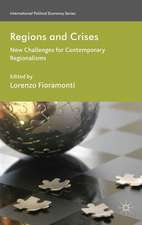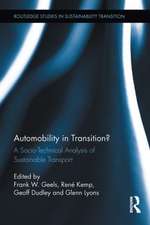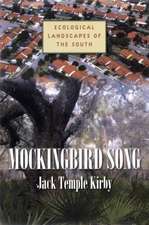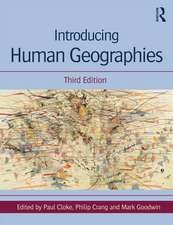Heritage, Pilgrimage and the Camino to Finisterre: Walking to the End of the World: GeoJournal Library, cartea 117
Editat de Cristina Sánchez Carreteroen Limba Engleză Hardback – 14 iul 2015
Instead of ending in Santiago, as the rest of the Caminos do, this route continues to the cape of Finisterre on the Galician Atlantic coast. This part of the Camino de Santiago is not officially recognized by the Catholic Church and doesnot count as part of reaching Compostela, the recognition granted by the Catholic Church to those pilgrims who have walked at least 100 km. For this reason, as well as its relationship with the sun cult, many pilgrims call this route “the Camino of the atheists.” In fact, the Catholic Church is a strong force for the heritagization of the rest of the Caminos, and maintains a clear ignoratio strategy concerning the Finisterre route: Officially, the church neither opposes nor recognizes this route.
| Toate formatele și edițiile | Preț | Express |
|---|---|---|
| Paperback (1) | 384.31 lei 6-8 săpt. | |
| Springer International Publishing – 17 oct 2016 | 384.31 lei 6-8 săpt. | |
| Hardback (1) | 391.61 lei 6-8 săpt. | |
| Springer International Publishing – 14 iul 2015 | 391.61 lei 6-8 săpt. |
Din seria GeoJournal Library
- 15%
 Preț: 642.51 lei
Preț: 642.51 lei - 15%
 Preț: 632.70 lei
Preț: 632.70 lei -
 Preț: 396.78 lei
Preț: 396.78 lei - 18%
 Preț: 948.92 lei
Preț: 948.92 lei -
 Preț: 430.59 lei
Preț: 430.59 lei - 18%
 Preț: 899.69 lei
Preț: 899.69 lei - 15%
 Preț: 581.79 lei
Preț: 581.79 lei - 18%
 Preț: 938.34 lei
Preț: 938.34 lei - 18%
 Preț: 888.80 lei
Preț: 888.80 lei - 15%
 Preț: 703.85 lei
Preț: 703.85 lei - 18%
 Preț: 890.68 lei
Preț: 890.68 lei - 24%
 Preț: 777.63 lei
Preț: 777.63 lei -
 Preț: 400.65 lei
Preț: 400.65 lei - 18%
 Preț: 785.55 lei
Preț: 785.55 lei - 18%
 Preț: 946.55 lei
Preț: 946.55 lei - 15%
 Preț: 661.02 lei
Preț: 661.02 lei - 18%
 Preț: 945.79 lei
Preț: 945.79 lei - 15%
 Preț: 637.28 lei
Preț: 637.28 lei - 15%
 Preț: 637.59 lei
Preț: 637.59 lei - 15%
 Preț: 637.46 lei
Preț: 637.46 lei - 15%
 Preț: 635.31 lei
Preț: 635.31 lei - 20%
 Preț: 568.43 lei
Preț: 568.43 lei - 15%
 Preț: 645.79 lei
Preț: 645.79 lei - 20%
 Preț: 569.85 lei
Preț: 569.85 lei - 15%
 Preț: 651.99 lei
Preț: 651.99 lei - 15%
 Preț: 639.41 lei
Preț: 639.41 lei - 15%
 Preț: 643.48 lei
Preț: 643.48 lei - 15%
 Preț: 663.60 lei
Preț: 663.60 lei - 15%
 Preț: 651.99 lei
Preț: 651.99 lei - 15%
 Preț: 651.02 lei
Preț: 651.02 lei -
 Preț: 390.63 lei
Preț: 390.63 lei -
 Preț: 395.63 lei
Preț: 395.63 lei
Preț: 391.61 lei
Nou
Puncte Express: 587
Preț estimativ în valută:
74.93€ • 78.24$ • 62.02£
74.93€ • 78.24$ • 62.02£
Carte tipărită la comandă
Livrare economică 04-18 aprilie
Preluare comenzi: 021 569.72.76
Specificații
ISBN-13: 9783319202112
ISBN-10: 3319202111
Pagini: 200
Ilustrații: XVI, 211 p. 53 illus.
Dimensiuni: 155 x 235 x 20 mm
Greutate: 0.5 kg
Ediția:2015
Editura: Springer International Publishing
Colecția Springer
Seria GeoJournal Library
Locul publicării:Cham, Switzerland
ISBN-10: 3319202111
Pagini: 200
Ilustrații: XVI, 211 p. 53 illus.
Dimensiuni: 155 x 235 x 20 mm
Greutate: 0.5 kg
Ediția:2015
Editura: Springer International Publishing
Colecția Springer
Seria GeoJournal Library
Locul publicării:Cham, Switzerland
Public țintă
ResearchCuprins
Chapter 1: Introduction: Finisterre, Heritage and Pilgrimage; Cristina Sánchez-Carretero.- PART I: HISTORY, MYTHS AND LEGENDS OF THE END OF THE WORLD.- Chapter 2: Imagining an End of the World: Histories and Mythologies of the Santiago - Finisterre Connection; Peter Jan Margry.- Chapter 3: Analyzing the Camino: From Vindicating Local Elements to the Success of Xacobeo; Manuel Vilar Álvarez.- PART II: LOCAL IMPACTS OF THE PILGRIMAGE TO FINISTERRE.- Chapter 4: Heritagization of the Camino to Finisterre; Cristina Sánchez-Carretero.- Chapter 5: Socio-economic Impacts of the Camino to Finisterre; Eva Parga-Dans.- Chapter 5: Processes of Change in Olveiroa, a Village-hostel; Paula Ballesteros-Arias.- Chapter 6: Archaeological Heritage Management along the Camino to Finisterre; Carlos Otero-Vilariño.- PART III: SPIRITUALITY, MOTIVES AND THE END OF THE WORLD.- Chapter 7: To be or not to be,… a Pilgrim? Spiritual Pluralism on the Finisterre Trail; Peter Jan Margry.- Notes on the Contributors.- List of Illustrations.- Index.
Notă biografică
Cristina Sánchez-Carretero is a staff researcher at the Institute of Heritage Sciences (Incipit) of the Spanish National Research Council (CSIC) in Santiago de Compostela, Spain. She was awarded a PhD by the University of Pennsylvania for her dissertation on the revitalization of religious practices among Dominican migrant workers in Spain (2002). Her areas of interest are: processes of traditionalisation and heritage formation; the intersection of migration and cultural heritage (in particular, the role of the revitalization of religious practices after migrating); and the role of rituals and expressive culture in contemporary societies. She has published extensively on these topics and has edited the books: Performance, arte verbal y comunicación (2000), with Dorothy Noyes; Holidays, Ritual, Festival, Celebration, and Public Display (2003), with Jack Santino; El Archivo del Duelo (2011); and Grassroots Memorials. The Politics of Memorializing Traumatic Death (Berghahn), co-edited with Peter Jan Margry (2011).
Textul de pe ultima copertă
This book presents research concerning the effects of the Camino to Finisterre on the daily lives of the populations who live along the route, and the heritagization processes that exploitation of the Camino for tourism purposes involves. Rather than focusing on the route to Santiago de Compostela and the pilgrimage itself, it instead examines a peculiar part of the route, the Camino to Finisterre, employing multiple perspectives that consider the processes of heritagization, the effects of the pilgrimage on local communities, and the motivations of the pilgrims. The book is based on a three-year research project and is the result of a multidisciplinary collaboration between anthropologists, sociologists, historians and archaeologists.
Instead of ending in Santiago, as the rest of the Caminos do, this route continues to the cape of Finisterre on the Galician Atlantic coast. This part of the Camino de Santiago is not officially recognized by the Catholic Church and doesnot count as part of reaching Compostela, the recognition granted by the Catholic Church to those pilgrims who have walked at least 100 km. For this reason, as well as its relationship with the sun cult, many pilgrims call this route “the Camino of the atheists.” In fact, the Catholic Church is a strong force for the heritagization of the rest of the Caminos, and maintains a clear ignoratio strategy concerning the Finisterre route: Officially, the church neither opposes nor recognizes this route.
Instead of ending in Santiago, as the rest of the Caminos do, this route continues to the cape of Finisterre on the Galician Atlantic coast. This part of the Camino de Santiago is not officially recognized by the Catholic Church and doesnot count as part of reaching Compostela, the recognition granted by the Catholic Church to those pilgrims who have walked at least 100 km. For this reason, as well as its relationship with the sun cult, many pilgrims call this route “the Camino of the atheists.” In fact, the Catholic Church is a strong force for the heritagization of the rest of the Caminos, and maintains a clear ignoratio strategy concerning the Finisterre route: Officially, the church neither opposes nor recognizes this route.
Caracteristici
Focuses on heritage management and local population issues in the Camino, on the route to Finisterre Provides a new analysis of pilgrimage and heritage Delivers intriguing insights into efforts to market the “End of the World” Includes supplementary material: sn.pub/extras













